As a responsible motorcycle owner, ensuring the safety and performance of your vehicle is of utmost importance.
One crucial aspect to consider is the condition of your brake pads. Over time, these essential components wear down and require replacement.
In this article, we will explore the factors that affect the lifespan of motorcycle brake pads, why they need to be changed, when to change them, and how to perform the replacement.
What Factors Affect the Lifespan of Brake Pads in a Motorcycle?
To understand how often you should change your motorcycle brake pads, it is crucial to consider the factors that affect their lifespan. These factors include:
1. Riding Style
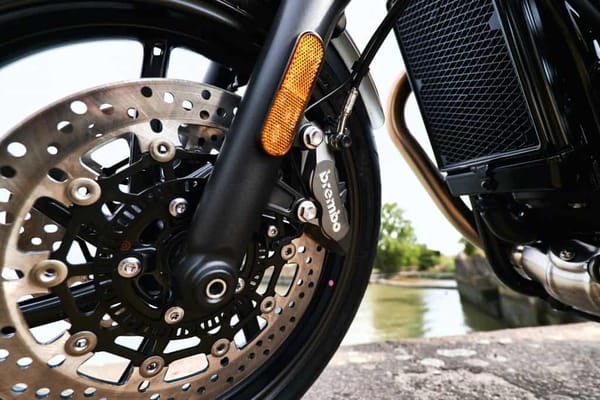
Aggressive riding, frequent braking, and abrupt stops can accelerate brake pad wear.
2. Terrain

Riding in hilly or mountainous areas with steep descents can put extra stress on the brake pads.
3. Environmental Conditions

Exposure to moisture, dust, and extreme temperatures can affect the longevity of brake pads.
4. Quality of Brake Pads

The material composition and overall quality of the brake pads themselves play a significant role in determining their lifespan.
Why Brake Pads Need to Be Changed
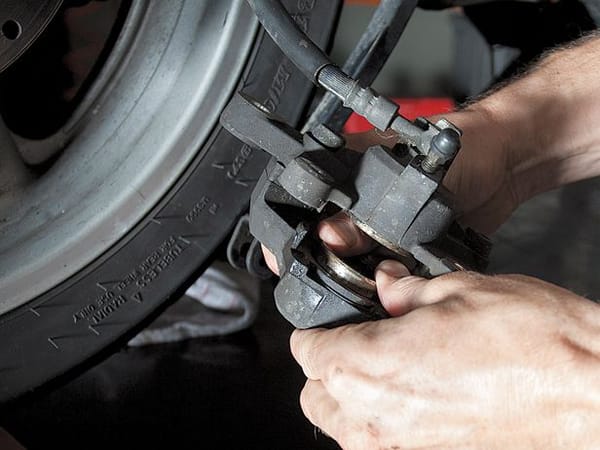
Brake pads are designed to provide friction against the brake discs, converting the kinetic energy of the moving motorcycle into heat energy, thus slowing down and stopping the vehicle.
Over time, this friction causes the brake pads to wear down. If the brake pads become too thin, their effectiveness diminishes, compromising your ability to stop safely.
Therefore, regular inspection and replacement of worn-out brake pads are essential for maintaining optimal braking performance.
When to Change Brake Pads on a Motorcycle
Determining when to change motorcycle brake pads depends on several factors.
While there is no fixed mileage or time interval, some indicators suggest that replacement may be necessary:
1. Visual Inspection
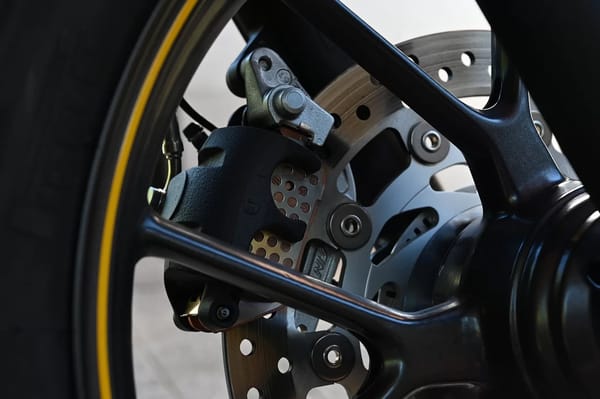
Check the thickness of the brake pads through inspection holes or by removing the caliper. If the pad material is worn down to 3mm or less, it’s time for replacement.
2. Squeaking or Squealing Sounds
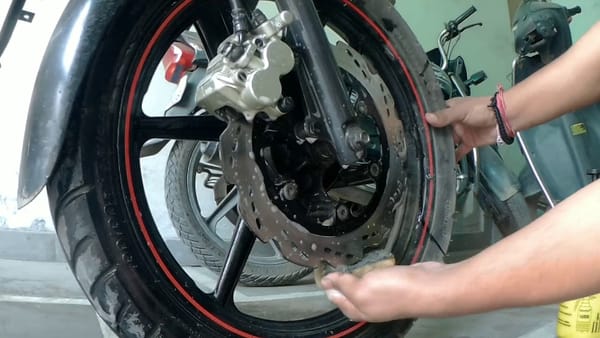
Unusual noises, such as squeaking or squealing when applying the brakes, may indicate that the brake pads have worn down significantly.
3. Reduced Braking Performance
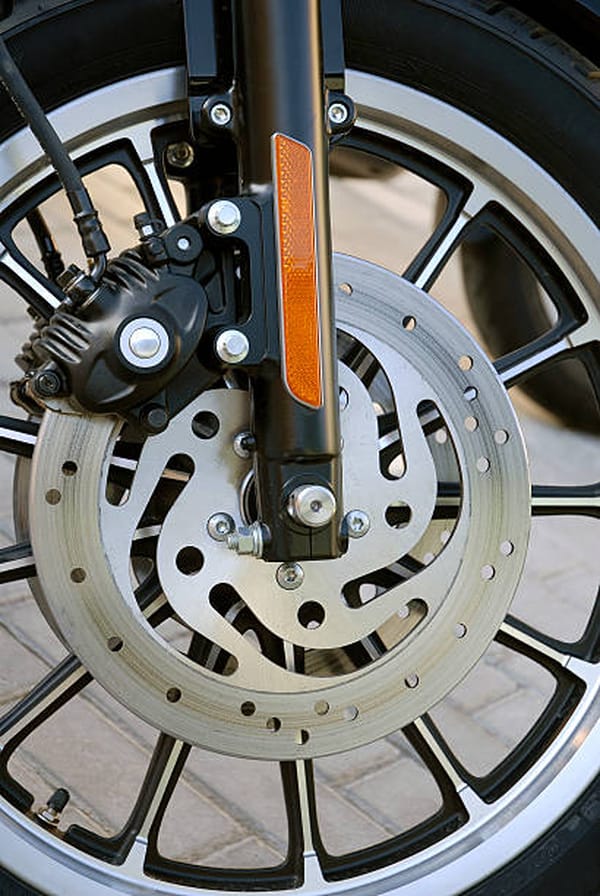
If you notice a longer stopping distance or the brakes feel less responsive, it is a sign that the brake pads need replacement.
4. Warning Indicators

Some motorcycles have built-in sensors that trigger warning lights on the dashboard when the brake pads are worn down and need replacement.
How to Change Brake Pads
Changing brake pads on a motorcycle can be a relatively straightforward process.
However, it is recommended to consult your motorcycle’s owner manual for specific instructions. Here is a general outline of the steps involved:
1. Gather the necessary tools

You will need a socket set, wrenches, brake cleaner, and new brake pads.
2. Elevate the motorcycle
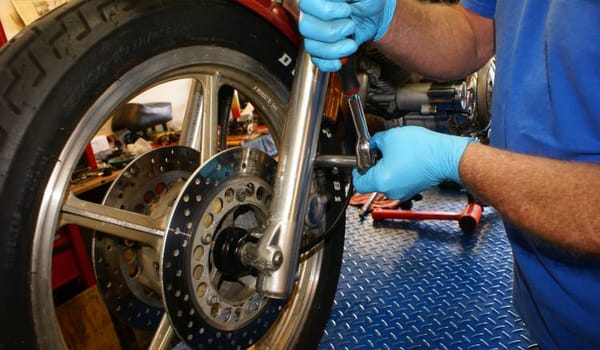
Use a rear stand or other means to lift the motorcycle off the ground, ensuring stability and safety.
3. Remove the caliper
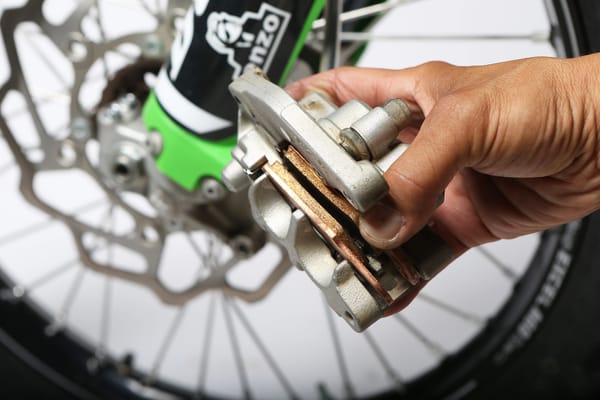
Loosen and remove the bolts holding the caliper in place, then carefully slide the caliper off the brake rotor.
4. Replace the brake pads
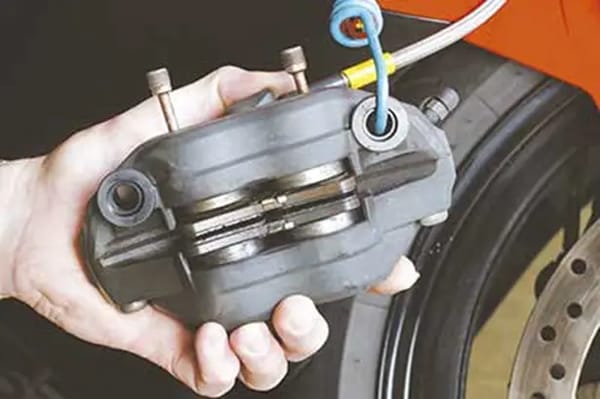
Remove the old brake pads from the caliper, clean the caliper and brake components with brake cleaner, and install the new brake pads.
5. Reassemble the caliper

Slide the caliper back onto the brake rotor, aligning it properly, and tighten the bolts securely.
6. Test the brakes
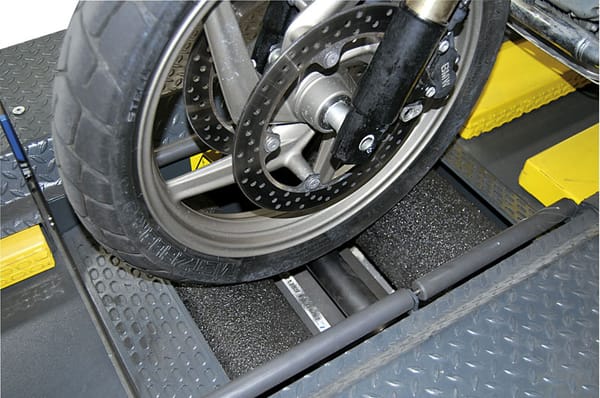
After completing the installation, pump the brake lever a few times to ensure proper alignment and functionality of the new brake pads.
FAQ
How Long Should Motorcycle Rear Brake Pads Last?
The average lifespan of motorcycle rear brake pads is typically between 5,000 to 10,000 miles (8,000 to 16,000 kilometers).
Factors such as riding style, terrain, and brake pad quality can affect their longevity.
Regular inspection and replacement are necessary if the pad material wears down to 3mm or less, or if there are signs of reduced braking performance or unusual noises.
What is The Life Expectancy of Bike Brake Pads?
The life expectancy of bike brake pads is generally between 1,000 to 3,000 miles (1,600 to 4,800 kilometers), depending on riding conditions and style.
Regular inspection is important, and it’s time to replace them when the thickness is around 3mm or less, or if there are changes in braking performance or unusual noises.
How Do I Know If My Motorcycle Brakes are Worn Out?
To determine if your motorcycle brakes are worn out, watch for these signs:
Reduced braking performance.
Squeaking or squealing noises when applying the brakes.
Vibrations or pulsations while braking.
Thin brake pads (less than 3mm).
Brake warning light on the dashboard.
If you notice any of these signs, have your brakes inspected and replace worn-out brake pads promptly for safety.
Conclusion
Proper maintenance of your motorcycle’s brake pads is crucial for your safety on the road.
By understanding the factors that affect their lifespan, recognizing the signs of wear, and knowing how to change them, you can ensure optimal braking performance.
Regular inspection and timely replacement of worn-out brake pads will help keep you safe while enjoying your rides.
Originally posted 2023-07-06 16:20:00.
